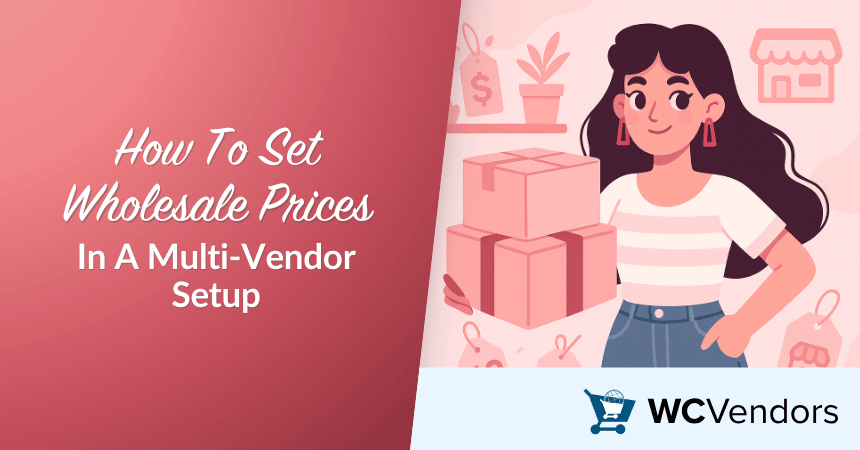
Setting wholesale prices in a multi-vendor marketplace can feel complicated at first. After all, you’re guiding an entire network of vendors to price consistently and profitably.
Wholesale prices set the tone for your marketplace’s reputation with wholesale buyers. They impact not only vendor success but the trust buyers place in your platform.
Through our experience supporting thousands of marketplace owners, we’ve seen how setting up wholesale prices properly. We know that getting wholesale prices right is one of the keys to running a professional, scalable business.
So, let’s walk through how to make that happen.
What Is Wholesale Pricing?
Wholesale pricing is what businesses pay when they buy products in bulk to resell at a retail price. It’s not simply a discounted retail price. It’s based on a thoughtful structure where both the vendor and the buyer can profit.
When you’re running a multi-vendor marketplace, consistency matters. Without a standard wholesale pricing approach, buyers could see huge gaps between similar products. And that hurts trust.
This is why understanding the difference between wholesale price and retail price is critical. Wholesale prices are lower because buyers purchase larger quantities, while retail price includes a markup to cover costs like marketing, packaging, and customer service.
If you don’t balance wholesale vs. retail price properly across vendors, you risk confusing buyers or making your marketplace feel unprofessional.
Key Wholesale Pricing Strategies For Vendors
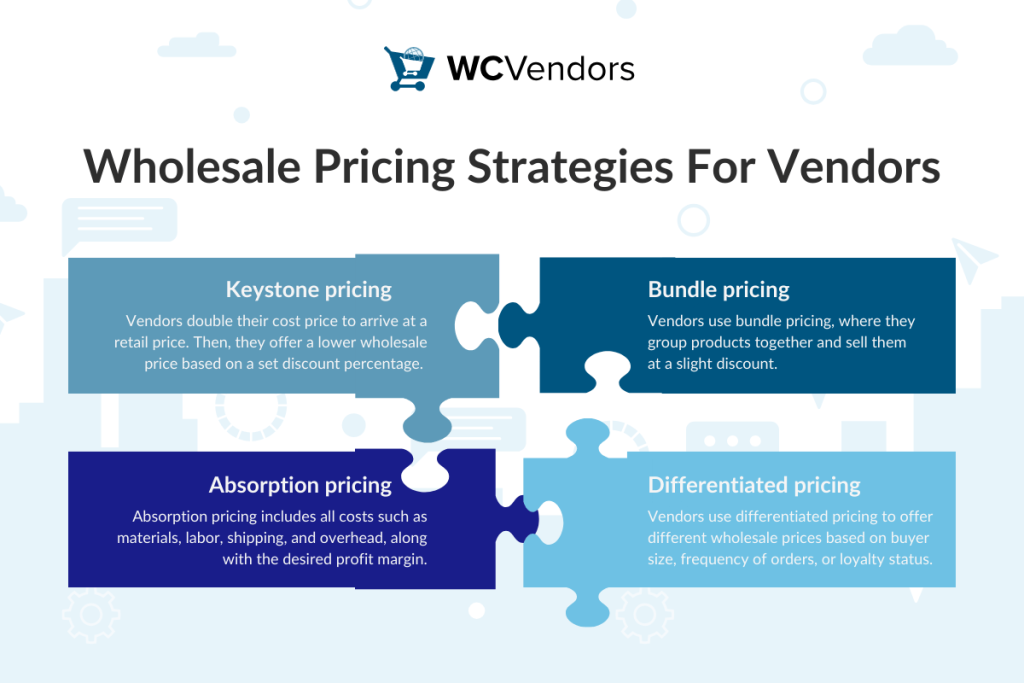
Helping your vendors understand good pricing strategies is half the battle. Here are a few methods worth sharing with them:
Keystone pricing
Keystone pricing is simple: vendors double their cost price to arrive at a retail price. Then, they offer a lower wholesale price based on a set discount percentage.
This strategy is great for standardized products but might not suit more competitive industries.
Absorption pricing
Absorption pricing includes all costs such as materials, labor, shipping, and overhead, along with the desired profit margin. The absorption pricing method is smart when vendors want to make sure they aren’t losing money on hidden costs.
This approach helps vendors avoid situations where their wholesale profit margin disappears because they forgot about something like storage fees.
Bundle pricing
Vendors might also want to use bundle pricing, where they group products together and sell them at a slight discount. It’s an effective wholesale pricing strategy for accessories, beauty items, and even electronics.
Bundles make wholesale offers more attractive and can help vendors sell more inventory at once.
Differentiated pricing
Not every wholesale customer is the same. Vendors can use differentiated pricing to offer different wholesale prices based on buyer size, frequency of orders, or loyalty status. It keeps high-volume buyers happy without giving away too much margin to smaller accounts.
Calculating Wholesale Prices: A Structured Approach
Vendors often ask: How do you actually calculate wholesale price properly?
Here’s what we teach:
Start with the cost price, including every expense that goes into making the product. Then add a healthy profit margin on top.
Here’s a basic pricing formula to follow:
Wholesale Price = (Cost Price) × (1 + Desired Profit Margin)
For example, if the total cost price is $15 and the vendor wants a 30% margin, the wholesale price would be $19.50.
Simple, but effective.
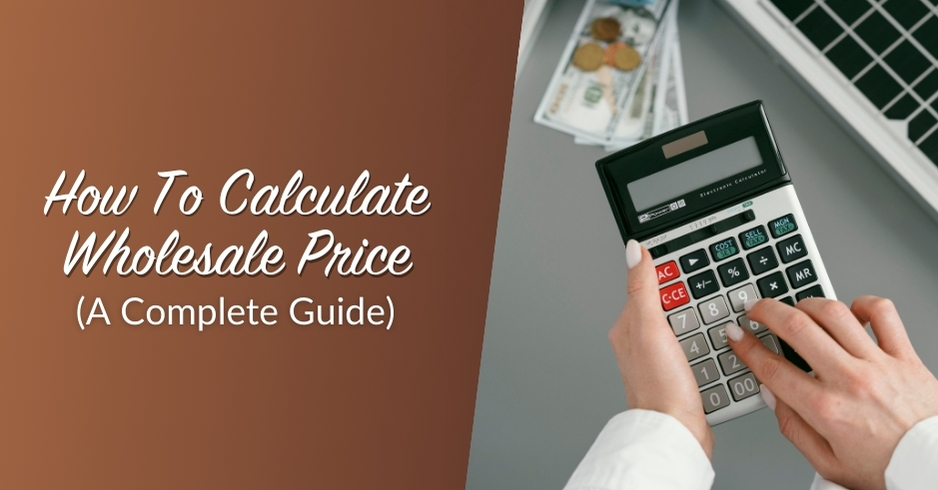
If you want a more detailed approach, read this complete guide on how to calculate wholesale prices. It covers everything from wholesale price formulas to pricing mistakes to avoid.
It’s also smart to encourage vendors to review competitor pricing and use a basic price index to stay competitive without giving away too much margin.
Implementing Wholesale Pricing In A Multi-Vendor Setup
1. Enable Wholesale Features in WC Vendors
Before you start setting things up, take a moment to check out our in-depth guide on managing and displaying wholesale prices across your marketplace. It’s a great way to ensure vendor adoption and build buyer confidence.
Managing wholesale prices in a multi-vendor environment used to be complicated. But now, with WC Vendors’ direct integration with Wholesale Suite, it’s become much simpler and more streamlined.
Now, you can enable wholesale pricing directly inside WC Vendors settings. Vendors can then easily set separate wholesale prices for their products, without needing complicated setups or extra apps.
You can follow our guide here on enabling wholesale prices to see exactly how it works.
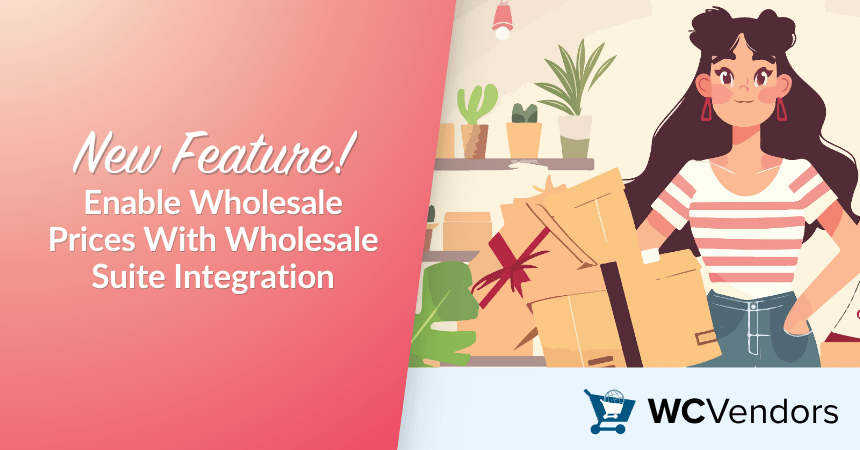
We designed this feature based on feedback from real marketplace owners who needed a clean, reliable way to set wholesale pricing.
2. Vendor Dashboard configuration
Once wholesale pricing is enabled, vendors will see a field to enter their wholesale price when editing their products. They can also set minimum order quantities to make sure wholesale buyers are serious.
Encouraging vendors to think about setting quantity breaks, such as price discounts for buying 10, 50, or 100 units, can make wholesale deals even more attractive.
3. Managing Customer roles
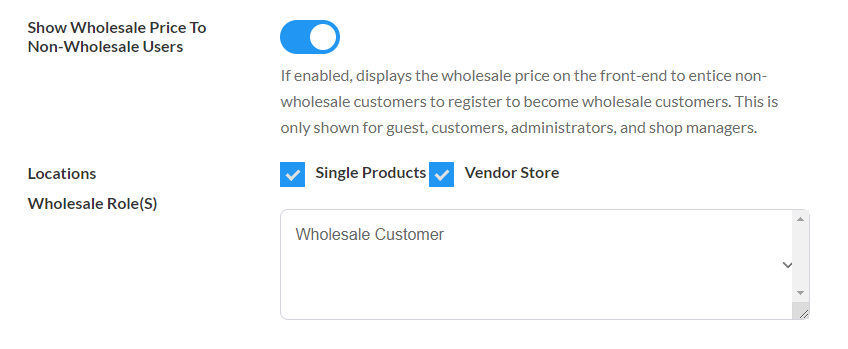
Managing access to wholesale prices matters too. You’ll want to create a special wholesale customer role, and only approved buyers should see the lower prices.
This keeps regular retail shoppers from seeing wholesale offers that aren’t meant for them.
Managing Profit Margins Across Vendors
It’s tempting for vendors to lower prices to win customers. But if wholesale prices dip too low, it damages profit margins and the reputation of your marketplace.

Help vendors understand the importance of maintaining a strong wholesale profit margin. You might even provide recommended wholesale profit margin guidelines based on product categories.
Also, encourage vendors to calculate their profit margin carefully. They should know their breakeven point and set pricing that leaves room for growth.
Monitoring pricing trends using a basic price index, either manually or through tools like Wholesale Suite Reports, can help vendors stay competitive without racing to the bottom.
Utilizing Pricing Tools And Indexes
Pricing isn’t set-and-forget. It evolves.
Vendors should regularly review how their wholesale prices stack up. Using tools to monitor competitor pricing and adjust strategies can make a big difference over time.
Even simple tools like Google Shopping comparisons, industry reports, or Shopify’s pricing calculators can give vendors better clarity on their standing.
Running occasional price calculations ensures that profit margins stay healthy, even when costs rise, which is a growing issue many marketplaces are facing due to inflation and supply chain challenges.
Conclusion
Wholesale prices aren’t just numbers. They’re a reflection of how professional, trustworthy, and scalable your multi-vendor marketplace is.
Those who invest in clear wholesale pricing systems and the right tools to support vendors grow faster, retain more vendors, and create better buyer relationships.
If you are committed to building a sustainable and thriving marketplace, focusing on wholesale pricing from the start is non-negotiable. Using WC Vendors alongside Wholesale Suite makes managing wholesale prices structured, fair, and scalable for vendors of all types.
To set wholesale prices properly and support your vendors effectively, here’s what you need to remember:
- What Is Wholesale Pricing?
- Key Wholesale Pricing Strategies For Vendors
- Calculating Wholesale Prices
- Implementing Wholesale Pricing In A Multi-Vendor Setup
- Managing Profit Margins Across Vendors
- Utilizing Pricing Tools and Indexes
By focusing on these areas, you can create a professional, consistent, and profitable wholesale environment for your marketplace. If you ever need support or want more guidance, we’re always here to help you grow.
Frequently Asked Questions
What’s a good profit margin for wholesale products?
Typically, a 30% to 50% margin is considered healthy for wholesale businesses. But it depends on the industry. Vendors selling high-end or niche products may operate at slightly lower margins if volume is high.
Should vendors always display the recommended retail price?
Yes, especially for wholesale buyers who plan to resell. Showing the recommended retail price next to the wholesale price highlights the buyer’s opportunity for profit.
How can vendors know if their wholesale price is competitive?
Checking market prices through a producer price index or simply surveying competitors regularly gives vendors good indicators. They shouldn’t guess. Real data matters.
